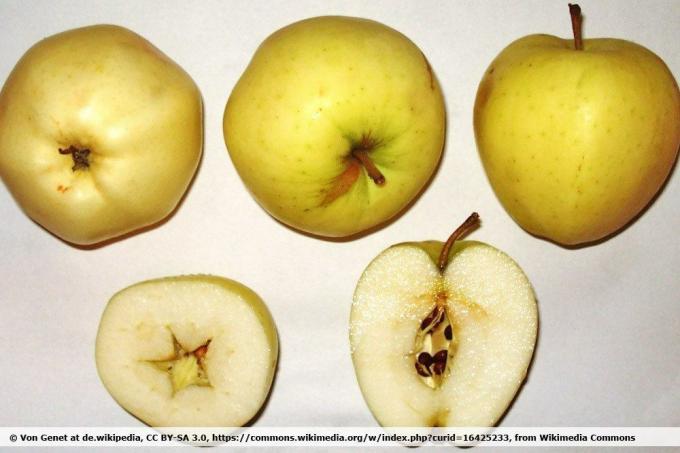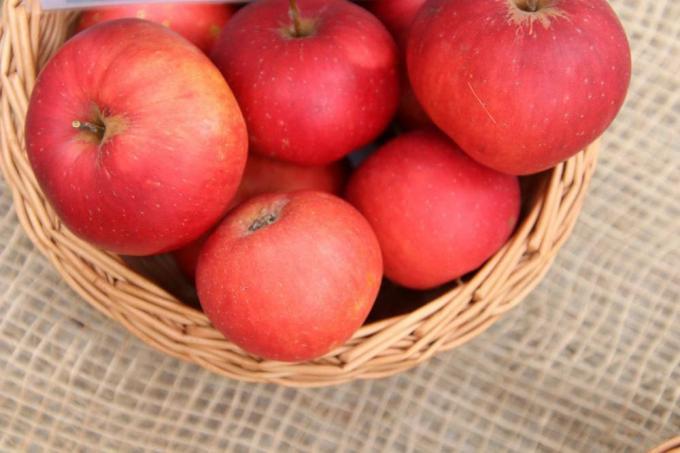
table of contents
- Old & historic apple varieties
- Old apple varieties from A - D
- Old apple varieties from E - G
- Varieties from H - J
- Varieties from K - P
- Apple varieties from R - W
Old and historic apple varieties have some advantages. They preserve the biodiversity, often have a high level of resistance and are also very interesting in terms of taste. Unfortunately, due to their uneven fruit shape or uneven color, they are often hard to find on the market, as they are at least visually less appealing than other cultivated forms. Nevertheless, they can convince in terms of taste, among other things.
Old & historic apple varieties
There are numerous reasons in favor of planting historical apple varieties. Including:
- Conservation of biodiversity
- often high resistance to diseases and pests
- proven and easy-care varieties
- Preservation of a cultural asset
- good adaptation to regional conditions
- diverse uses
Old or even historical varieties often produce very tasty apples. The most common reason why they cannot (no longer) be found in the supermarket or at the weekly market is their appearance. Because often an apple of an old variety is more similar to today's “rejects” - but this does not change the fine to intense aroma and its resistance.
Shelf life can also be a factor. Because some people want apples that can be eaten straight away from the tree and others have to be stored for weeks or months before they are ready to be eaten. Others, however, do not last long. The modern, practical varieties are often easier to store as a result.
Old apple varieties from A - D
Alcmene
The Alkmene variety is a cross between the cultivated forms Cox Orange and Privy Councilor Dr. Oldenburg. In terms of taste, they are still very close to the Cox Orange. However, the plants are clearly more resistant to drought and are therefore also suitable for areas and soils with little rainfall.
The harvest is possible from around September. The taste of the fruit is sweet with a mild acidity. It can be stored for about two months. The only disadvantage is that the tree or the fruit are not resistant to scab.
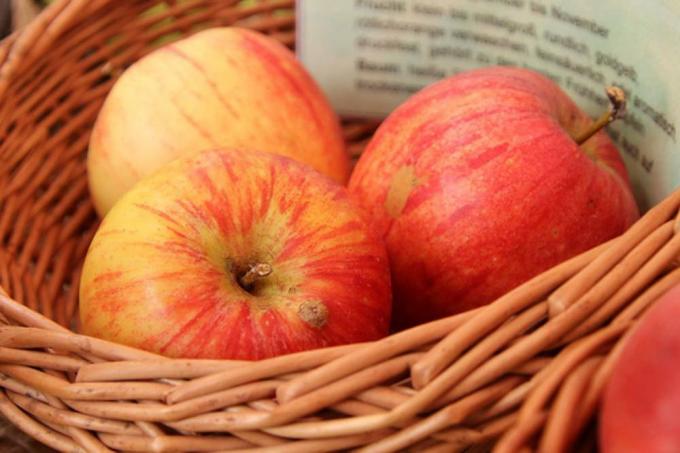
Berlepsch
The Berlepsch thrives particularly well on nutrient-rich, loamy soils. The fruits are also suitable for allergy sufferers and are wonderful table apples due to their rounded aroma.
Another special feature is that this variety is also suitable for cultivation as espalier fruit or spindle tree.

Champagne renette
The champagne renette variety is ideal for making juice, but it can also be consumed directly. After the harvest in October, however, you should wait about two months, because only then will the apples be ready for consumption.

Cox orange
Cox Orange is a wonderful table apple that can also be eaten straight from the tree. The harvest time is around October. Due to the good shelf life, the apples can still be enjoyed until March.
The taste is extremely aromatic and sweet.

Danzig Kantapfel
The Danzig Kantapfel is an old apple variety that is very easy to care for and has few requirements. The trees are resistant and resilient and are therefore also ideal for barren and rougher regions. The juicy, sweet and sour fruits can be harvested in October and are then ready to be enjoyed. The apples can usually be stored until December.
Old apple varieties from E - G
Ice apple
The Eisapfel or Eiserapfel is one of the oldest German apple varieties. The trees produce large, sweet fruits. The acidity of the apples is very low. Overall, the aroma is rather mild, which makes the ice apple more suitable as a kitchen apple than as a table apple.
The ice apple can be harvested in October, but is not ready for consumption until December. Since it lasts for a surprisingly long time and can be stored well, the Eiserapfel can be kept from October to June under appropriate conditions.
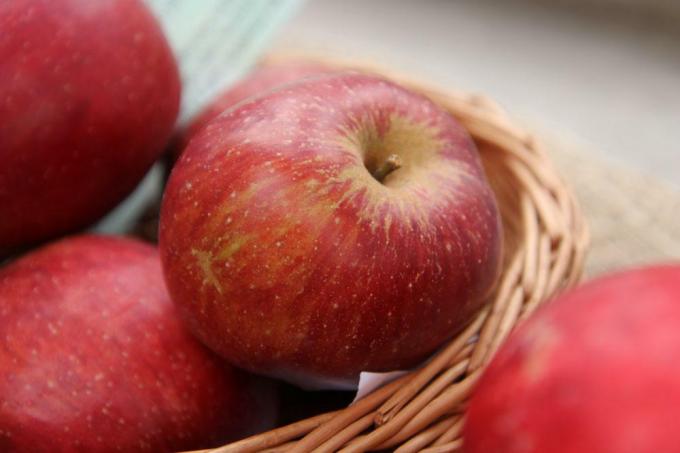
Finkenwerder Autumn Prince
The Finkenwerder Herbstprinz is an old apple variety that should be harvested as late as possible in October. However, the historical apple needs a comparatively long ripening period. It is only suitable for consumption from February. Once it is ready for consumption, the fruit and the sweet and sour aroma won't last long. As early as the end of March, the crisp and firm flesh becomes crumbly and soft and loses its taste.
One advantage of this variety, however, is that the fruits are suitable for allergy sufferers. A disadvantage, however, is that the trees need very nutrient-rich soil in order to thrive accordingly.
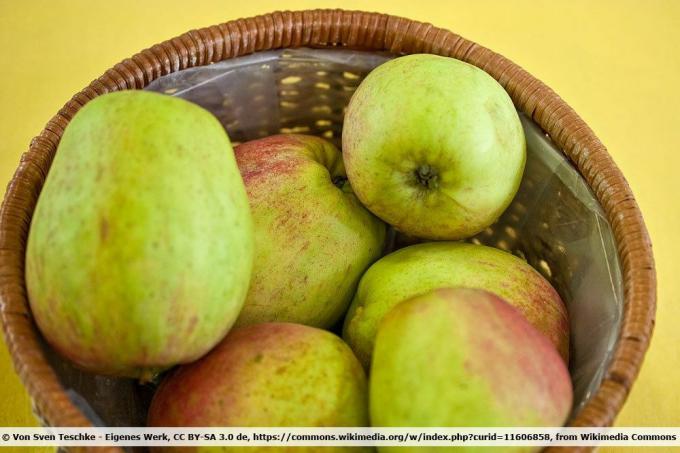
Gravensteiner
The Gravensteiner variety is undemanding, but tasteful. The very juicy fruits can be harvested and enjoyed from September. However, they are only fully ready for consumption after they have been stored for about four weeks. The apple can be stored for several months without any problems, is suitable for direct consumption as a table apple, but also for cooking and baking, or for making juices.
Since the trees are very resistant and undemanding, they are also ideal for beginners in gardening and can bring high yields for a long time.
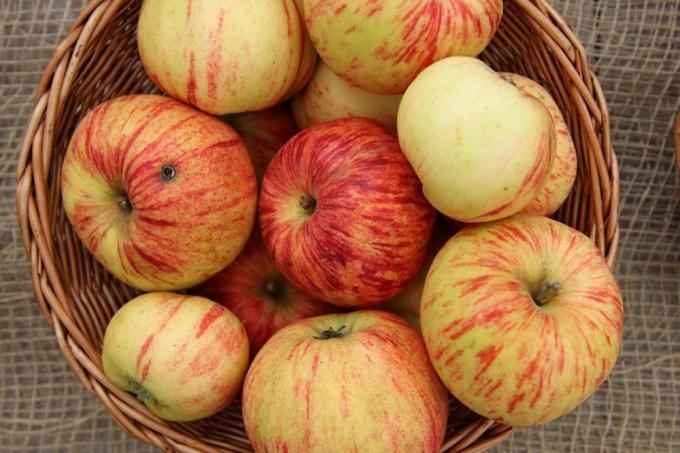
Varieties from H - J
Holstein Cox
The variety Holsteiner Cox is up to the 17th Trace back to the century. The old variety is well suited for allergy sufferers and is extremely versatile, as it can be used both as a table apple and as a kitchen apple. The maturity for picking and consumption are already reached in August. Storage is possible until around December. However, the fruits are most aromatic only until around October.
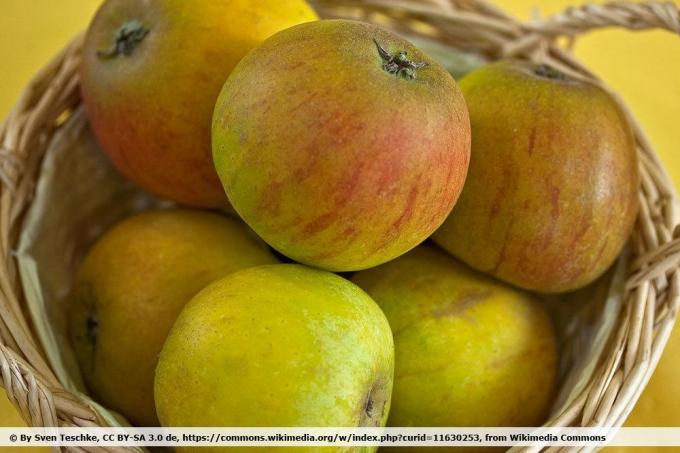
Ingrid Marie
From September the red apples of the old Ingrid Marie variety are ripe for picking. Initially, however, they still have a comparatively sour taste. After storage for about four weeks, the apple is ready to be enjoyed and the apple is significantly sweeter in taste and aroma. Ingrid Marie can be stored for a very long time and can be kept until around March. The fruits are suitable as table and kitchen apples.
Jonathan
Jonathan is one of the comparatively undemanding apple varieties and also thrives very well on poor soils. The apples are ripe for picking between the end of September and the end of October. However, the delicately sour, intense aroma is not developed until November. It can be stored until April without any problems.
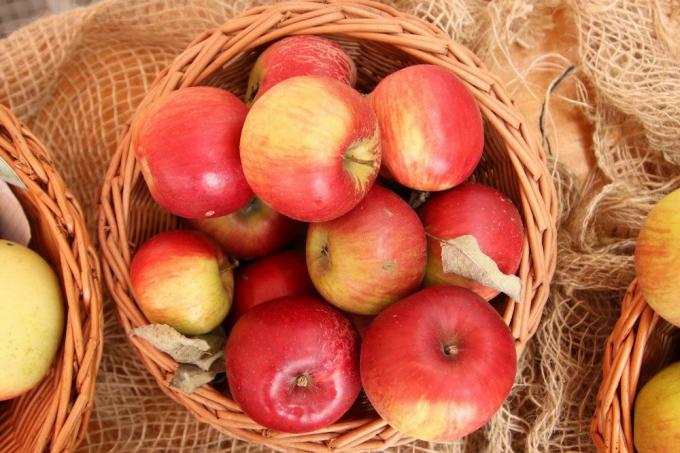
James Grieve
The Scottish, historical apple variety James Grieve is very juicy and sweet and sour in taste. The apple of this variety is suitable both as a table apple and thus for fresh consumption, as well as a kitchen apple. The fruits are especially ideal for making juice.
The harvest time is at the end of August and it is ready for consumption after one to two weeks. The fruits are not suitable for storage. They can only be kept for about four weeks.
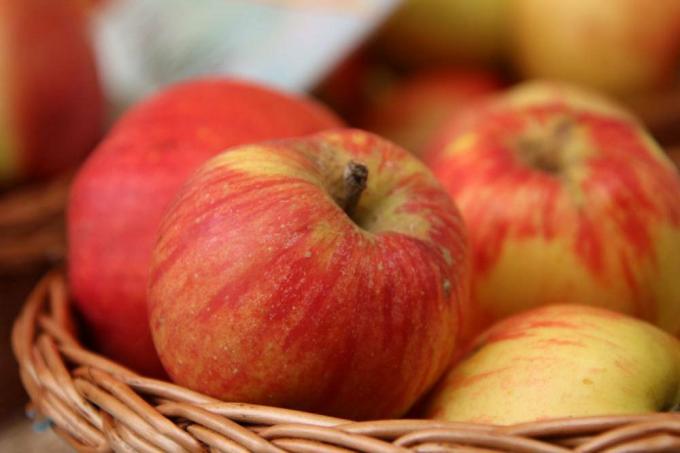
Varieties from K - P
Kaiser Willhelm
Very juicy and sweet and sour in the aroma, Kaiser Wilhelm is a good choice in terms of taste. The historical variety is well suited for allergy sufferers. In addition, the apples can be stored for a long time without any problems. The harvest can take place around mid-October. After two months of storage, the fruits of the Kaiser Wilhelm variety have developed their full taste and are ripe for consumption.
They are ideal for fresh consumption and as table apples, but can also be used as kitchen apples.

Pomeranian crook
The Pomeranian Krummstiel is one of the apple varieties that thrive without any problems even in harsh climates and regions. The fear are suitable for allergy sufferers, as they contain only a few allergens.
Juicy and sweet and sour, they are wonderfully suitable as table apples. You can also use the to bake and cooking can be used. The harvest season begins in October. However, it is only ready to be enjoyed a few weeks later, around November. Storage until February is possible without any problems. However, care should be taken to ensure that the storage conditions are right, otherwise the fruits will turn brown and crumbly very quickly.
Apple varieties from R - W
Red Boskoop
The red Boskoop apple needs a very nutrient-rich substrate, so it is not suitable for barren soils. The harvest of the slightly sour apples can begin in mid-October. After about six weeks of storage, the fruits have developed their full taste and are ready to be eaten. They can be stored for a very long time and can usually be consumed until April.
The Roter Boskoop variety is rather unsuitable as a table apple. However, it is ideal for baking and making applesauce.
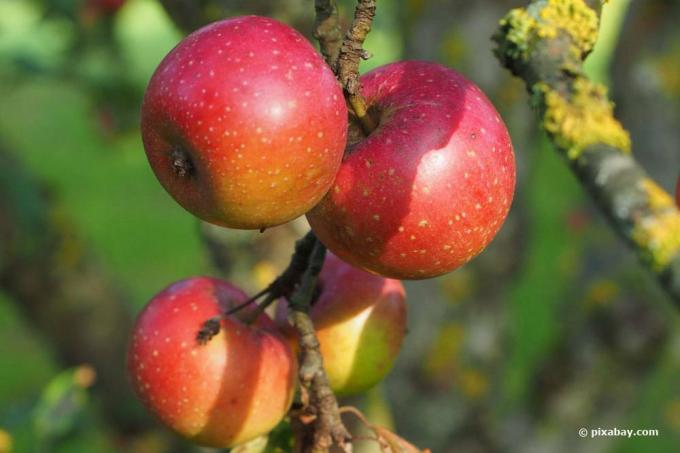
Nicer from Boskoop
The apples are only ripe for picking between October and November. It is even longer to be ready for consumption. The full aroma is not developed until December.
They are suitable for fresh consumption as well as for cooking, baking and for making juice. The flesh is firm, juicy and sour.

White clear apple
The old variety Weißer Klarapfel despite wind and weather and is therefore a good choice for regions with a harsher climate. The apples with their mild acidity and intense taste can be harvested from around July to August. They already have their full aroma and are ready to be enjoyed. A refrigerated storage for a few weeks is possible. However, the fruits spoil comparatively quickly. They are also best for fresh consumption, but not as kitchen apples.
